Art Deco kitchen backsplashes are an elegant way to bring the timeless beauty of the Art Deco movement into a modern kitchen. When you think of Art Deco, certain design elements come to mind: bold geometric patterns, luxurious materials, metallic finishes, and an overall sense of glamour and sophistication. Translating this design aesthetic into a kitchen backsplash creates a visual focal point that can elevate the entire space. One of the defining features of an Art Deco kitchen backsplash is the use of geometric shapes. Triangles, circles, chevrons, and zigzags are often seen in Art Deco designs. These patterns can be achieved through tile placement, creating striking visuals that catch the eye. Whether it’s a repeating motif or a more complex mural-like design, the geometric pattern becomes the star of the kitchen.
Material choice is another critical aspect when creating an Art Deco backsplash. Ceramic and porcelain tiles are popular because of their versatility and durability, but Art Deco is all about luxury, so glass, marble, or even mirrored tiles are also great choices. A combination of these materials can create depth and texture, enhancing the overall aesthetic. For example, using black glass tiles interspersed with metallic gold or silver accents reflects light beautifully and adds an opulent feel to the kitchen. The mixture of these materials can also make cleaning easier, as glass and porcelain tiles are generally smooth and resistant to staining.
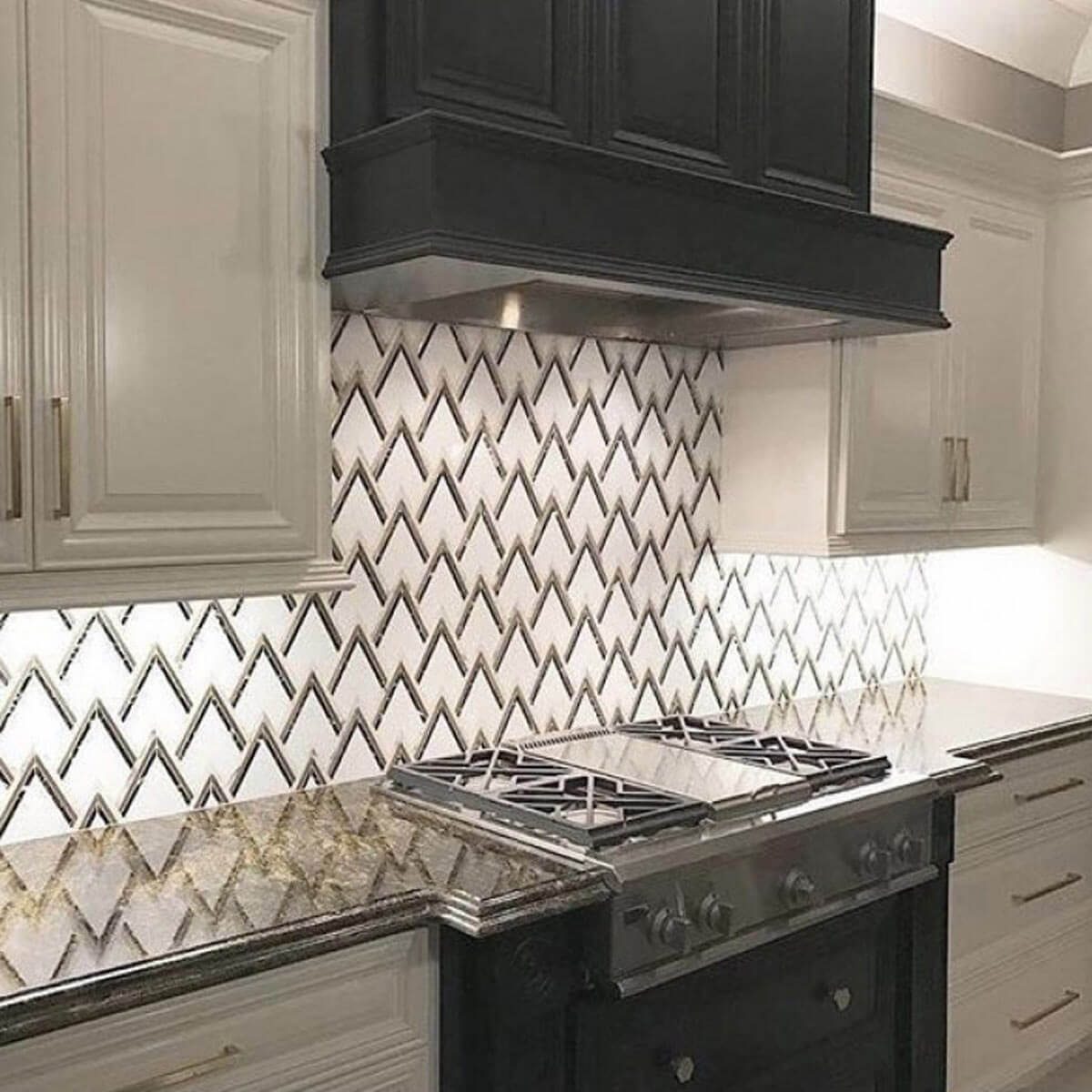
Color plays a pivotal role in creating an authentic Art Deco feel. While black, white, and metallics are classic choices, bold colors like emerald green, royal blue, and deep burgundy can be incorporated as accent tiles or borders. These colors work well with the geometric shapes and can be placed strategically to draw attention to specific areas of the backsplash. The use of contrasting colors, a hallmark of Art Deco design, can add drama to the kitchen and give the space a vintage yet modern look.
Metallic finishes are another signature element of Art Deco design, and they can be easily integrated into a kitchen backsplash. Tiles with gold, silver, or brass accents create a sense of opulence and can tie in with other kitchen elements such as hardware or lighting fixtures. You might opt for small metallic accent tiles or go bold with an entire backsplash in a metallic finish. Brushed gold or chrome tiles also pair beautifully with darker colors, creating a sharp, luxurious contrast that exudes elegance.
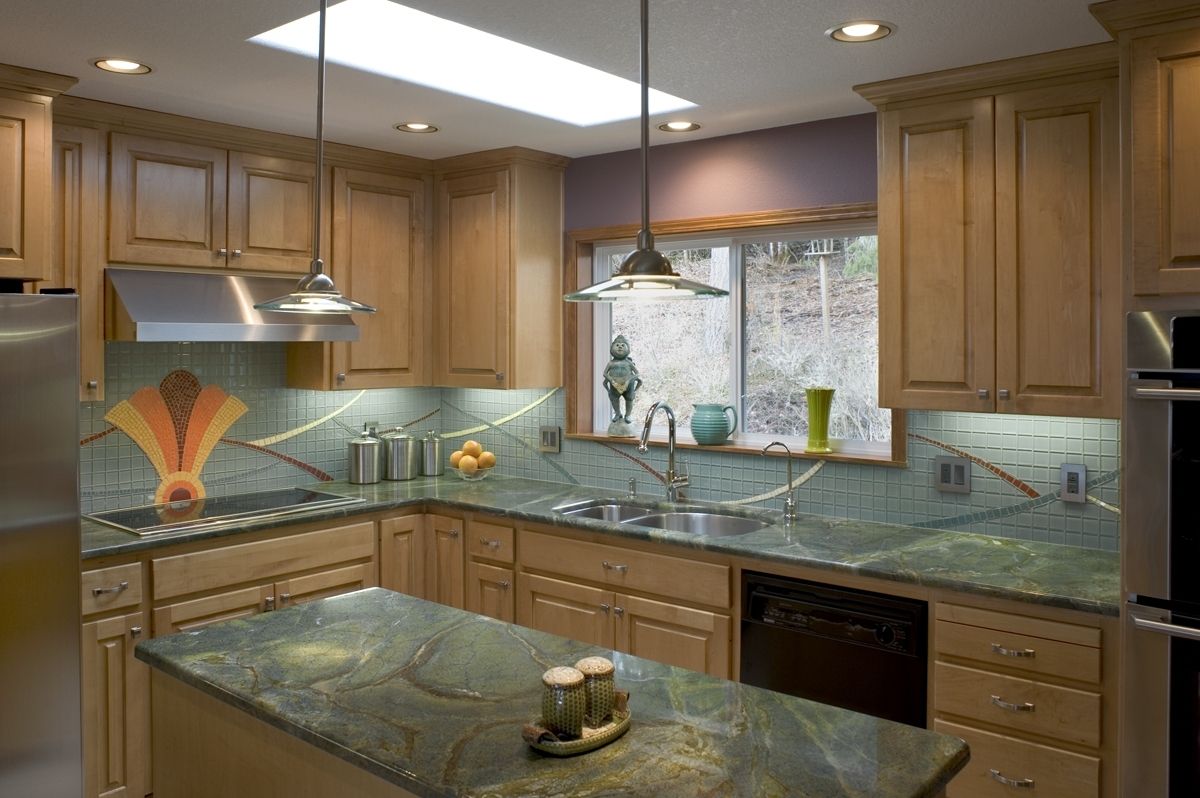
Texture is equally important in an Art Deco backsplash. By choosing textured tiles—like beveled or raised designs—you can add dimension to the backsplash, making it more visually interesting. Textured glass tiles, for example, can catch and reflect light in ways that flat tiles cannot, adding a unique sparkle to the kitchen. Combining textures, such as glossy and matte tiles or smooth and ridged surfaces, adds complexity to the design while staying true to the Art Deco style.
For those who prefer a more subtle approach, incorporating Art Deco-inspired motifs rather than covering the entire backsplash is a great compromise. For example, you might create a feature area above the stove or sink with intricate patterns, while the rest of the backsplash remains neutral. This keeps the design sophisticated yet not overwhelming, allowing other elements of the kitchen to shine while still offering a nod to the Art Deco era.

Incorporating lighting into the design of an Art Deco backsplash can enhance its visual impact. Under-cabinet lighting or backlighting behind glass tiles can highlight the details of the geometric patterns and textures. The interplay of light and shadows on textured or metallic tiles can add an entirely new dimension to the backsplash, making it a true statement piece in the kitchen. Consider LED strips or spotlights to emphasize certain sections of the backsplash, creating a dynamic, illuminated feature wall.
The installation process for an Art Deco backsplash requires precision, especially with complex geometric patterns. It’s important to work with an experienced installer who understands the intricacies of tile placement. A small misalignment in the pattern can be very noticeable and disrupt the flow of the design. Proper planning and layout before installation ensure that the result will be seamless and visually cohesive. I always recommend laying out the tiles beforehand to see how the pattern will look and ensuring the measurements are correct before any adhesive goes down.
Maintenance is another factor to consider. While Art Deco backsplashes often use luxurious materials, many of these materials, like glass or ceramic tiles, are easy to clean. A simple wipe-down with a mild cleaner will usually suffice. However, if you opt for marble or other porous materials, it’s important to seal the tiles to protect them from staining. Metallic tiles may require special care to maintain their shine and prevent tarnishing, but regular cleaning and occasional polishing will keep them looking new.
An Art Deco backsplash can seamlessly blend with different kitchen styles. In a modern kitchen, the bold geometric patterns can add a vintage touch, creating a fusion of old and new. In a more traditional kitchen, an Art Deco backsplash can serve as a refreshing contrast, bringing energy and excitement to the space. The versatility of the Art Deco style means it can complement a variety of cabinetry, countertop, and hardware choices, making it a flexible design option for many homeowners.
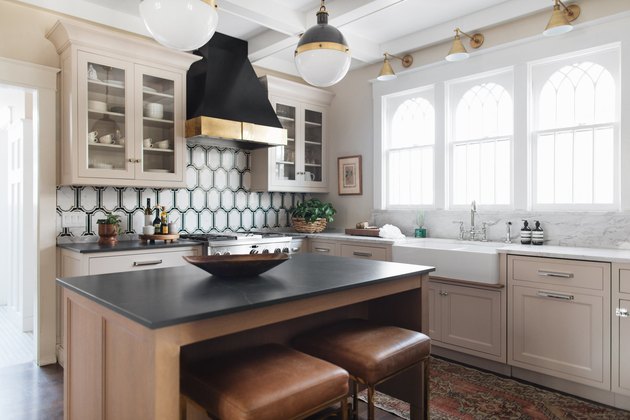
In smaller kitchens, an Art Deco backsplash can help create the illusion of more space. The use of reflective materials like glass or metallics can make the kitchen feel brighter and more open. Additionally, the vertical or diagonal lines often found in Art Deco designs can draw the eye upward, making the ceilings appear higher. By strategically placing bolder patterns in key areas, you can create a sense of depth and dimension, which is particularly useful in compact spaces.
While the visual appeal of an Art Deco backsplash is undeniable, it can also serve a functional purpose. In a busy kitchen, the backsplash protects the wall from splashes, spills, and heat. Art Deco backsplashes, with their typically durable materials, are well-suited for high-traffic areas. Their sleek surfaces are easy to clean, and they maintain their aesthetic charm even after years of use. The ability to combine form and function is one of the reasons why an Art Deco backsplash is a smart investment for a kitchen renovation.
Sustainability is a growing concern for many homeowners, and an Art Deco backsplash can be designed with eco-friendly materials. Recycled glass tiles, for example, are a great option, providing the same luxurious feel as traditional glass but with a smaller environmental footprint. Other sustainable options include ceramic tiles made from natural, non-toxic materials and low-impact manufacturing processes. By choosing environmentally friendly materials, you can achieve a beautiful Art Deco look while also supporting sustainable practices.
When it comes to accessorizing the rest of the kitchen, the Art Deco backsplash can serve as a jumping-off point. Matching the hardware, light fixtures, or even small appliances to the metallic accents in the backsplash creates a cohesive look. You could even carry the geometric theme into other parts of the kitchen, like with a chevron-patterned floor or hexagonal pendant lights. The key is to maintain balance so that the backsplash remains the focal point without competing with other design elements.
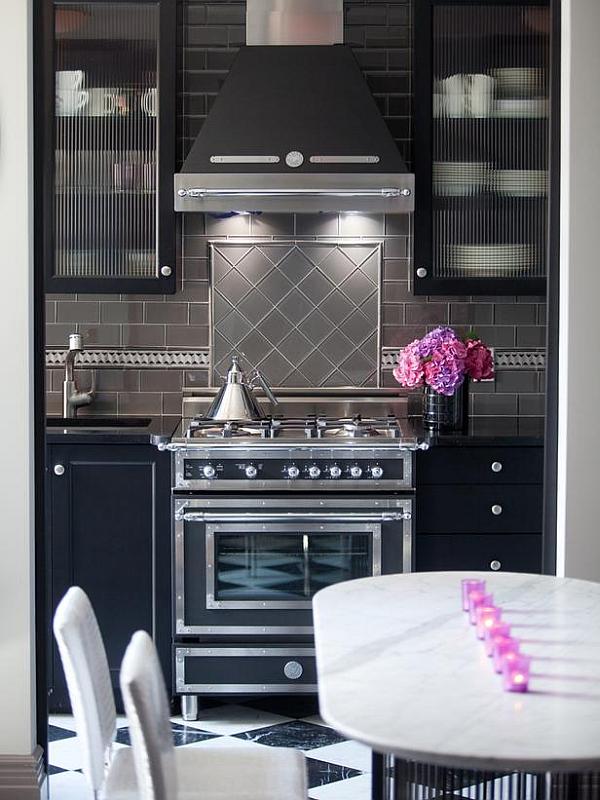
Common Mistakes to Avoid
One of the most common mistakes when installing an Art Deco kitchen backsplash is overcomplicating the design. Art Deco is bold, but it’s also balanced, and too many competing elements can make the space feel chaotic rather than cohesive.
Another mistake is not considering the long-term maintenance of certain materials. While marble or metallic finishes are beautiful, they may require more upkeep than ceramic or glass tiles.
Additionally, improper lighting can diminish the impact of the backsplash. Without adequate lighting, the intricate details and textures can get lost, so it’s important to plan the lighting around the backsplash design.
Last, skimping on installation quality is a mistake to avoid. Art Deco designs are all about precision, and a poorly installed backsplash can ruin the aesthetic.

What materials are best for an Art Deco kitchen backsplash?
For an authentic Art Deco look, materials like glass, marble, ceramic, and metallic finishes work beautifully. Glass tiles offer a sleek, reflective surface, while marble adds a touch of luxury. Metallic accents, whether in gold, silver, or brass, are crucial to achieving that opulent feel. These materials are not only visually stunning but also durable and easy to maintain, making them perfect for kitchen spaces.
How do I maintain an Art Deco backsplash?
Maintenance depends on the materials used. Glass and ceramic tiles are generally easy to clean with mild soap and water. For marble or other porous materials, sealing is necessary to prevent staining. Metallic tiles may require occasional polishing to maintain their shine. Overall, regular cleaning will keep your backsplash looking new without much hassle.
Can an Art Deco backsplash work in a small kitchen?
Yes, Art Deco backsplashes can actually enhance smaller kitchens. The use of reflective surfaces like glass or metallics can make the space feel larger by bouncing light around. Geometric patterns can also create an illusion of more height or depth, helping a small kitchen appear more spacious.

What colors should I use in an Art Deco backsplash?
Classic Art Deco colors include black, white, and metallics like gold and silver. However, bold colors like emerald green, deep blue, and burgundy can also be incorporated as accents or borders. The key is to balance neutral tones with these bold accents to create contrast without overwhelming the space.
Is an Art Deco backsplash expensive?
The cost of an Art Deco backsplash can vary depending on the materials and complexity of the design. High-end materials like marble or custom-made tiles can increase the cost, but there are also more affordable options, like ceramic or porcelain tiles, that still capture the Art Deco aesthetic. Installation costs may also be higher if intricate patterns are involved, as precise placement is key.
Can I DIY an Art Deco backsplash?
While a DIY approach is possible, Art Deco designs often involve complex patterns that require precision. If you’re confident in your tiling skills and have experience with geometric layouts, it can be a rewarding project. However, hiring a professional installer is recommended for best results, especially when working with luxurious materials or intricate designs.
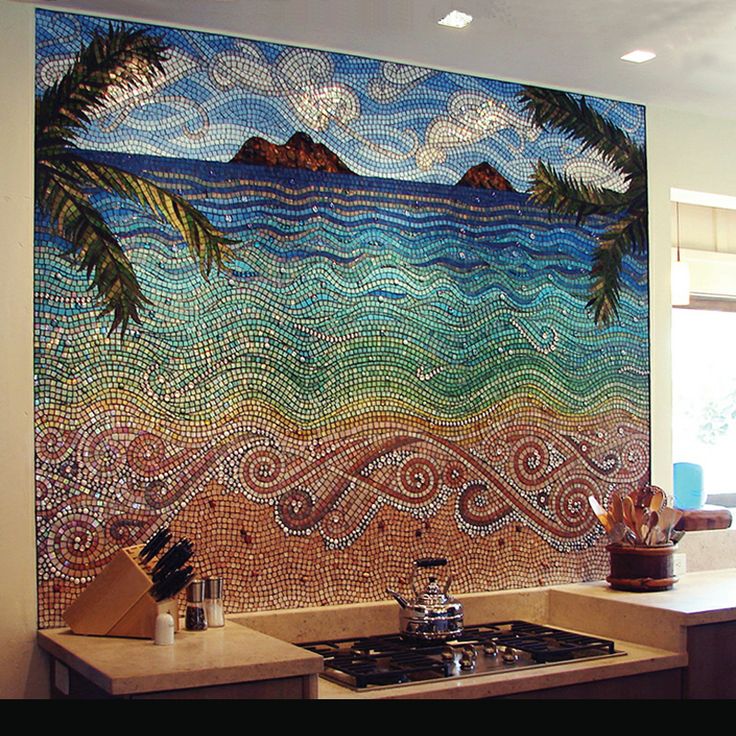
Ways To Use Subway Tiles In The Kitchen
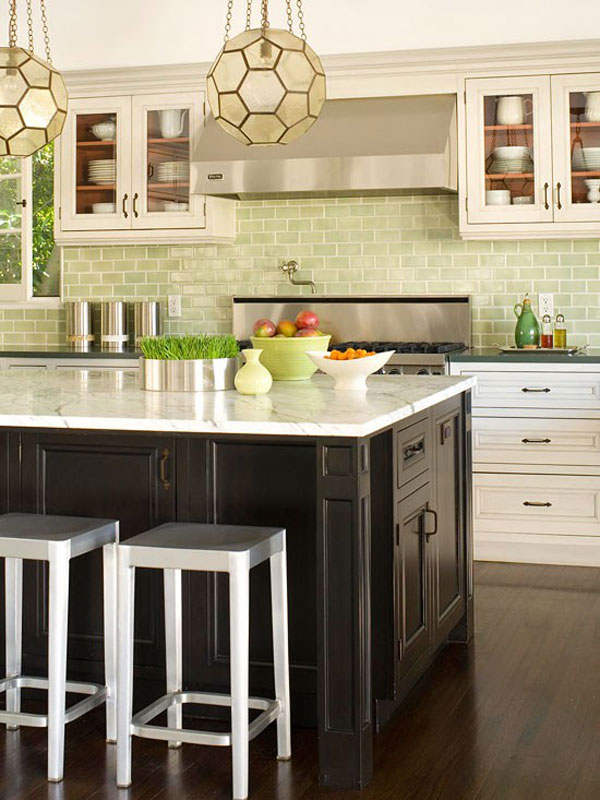
Modern Matte Black Kitchen Backsplash

Cool Kitchen Backsplash, Kitchen Ideas

Contemporary Kitchen Backsplash and Murals

Related Posts:
- Textured Wallpaper For Kitchen Backsplash
- Kitchen Tile Murals Tile Art Backsplashes
- Craftsman Style Kitchen Backsplash
- Images Of Subway Tile Kitchen Backsplash
- Large Subway Tile Kitchen Backsplash
- French Kitchen Backsplash Ideas
- Bronze Kitchen Backsplash
- Black Glass Tiles For Kitchen Backsplashes
- Interesting Kitchen Backsplashes
- Easy Inexpensive Kitchen Backsplash Ideas